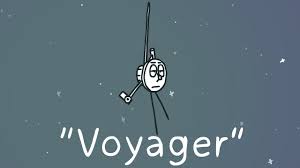Trump Goes Public
By Shlomo Maital

Here is the story of how a man, leading polls in the Presidential race, who may become President of the US in November, has engineered a legal swindle, that may cost unwitting innocents much cash, because he needs money to pay his mounting legal bills and bail bonds.
Here’s how a man running for President uses legal means to turn $3.7 million into $3.5 billion [“Trump Media booked $3.7 million in revenue in the first nine months of 2023 and “expects to incur significant losses into the foreseeable future,” according to a regulatory filing. Unless it can rapidly boost its revenue or turn a profit, it could have difficulty maintaining its lofty valuation, experts said.]. This man, Trump, will likely have between 75 and 80 million Americans who vote for him in November. Really.
This is from CBS News: (and you could not make it up if you tried):
“Former President Donald Trump could soon receive a windfall valued as much as $3.5 billion, with shareholders of a publicly traded funding partner voting Friday on whether to merge with his Trump Media & Technology Group. The vote is taking place about one month after the two companies received regulatory approval to proceed with the long-delayed merger. If shareholders of Digital World Acquisition Corp. (DWAC) approve, the businesses could combine soon afterward, putting the former president’s Truth Social social media platform on the stock market. Trump created Truth Social as a conservative-focused social media service after he was banned from Twitter, now known as X, and other platforms following the January 6th riot.”
This is a back-door Initial Public Offering of stock, bypassing the normal tough SEC regulations.
“Digital World is a special purpose acquisition company, or SPAC, a shell company that is created to take a private business public without conducting an initial public offering. The new company would be renamed Trump Media & Technology Group Corp. and trade under the stock ticker DJT, the same letters as Trump’s initials, according to regulatory filings.”
SPACs have long gone out of fashion. Trump is using SPAC to make a quick buck, leveraging his MAGA supporters who will buy anything with the stock ticker DJT (Donald J Trump, get it?).
“Trump stands to make a fortune from the pending deal, given that he would control 78.8 million shares of the newly merged company, or about 58% of the business. Based on DWAC’s current stock price, that stake could be worth as much as $3.5 billion.”
No, Trump can’t flip his stocks and sell them at once. He’s limited by law to hold them for six months. Can he borrow against them? No. “Trump likely won’t be able to use the stock to get a loan, either. That’s because the DWAC regulatory filing states that founding investors can’t sell, lend, donate or encumber their shares for six months after the deal closes.” [a ‘lock-up agreement’].
“It’s possible that Digital World could waive the lock-up agreement before the deal closes. Or, in what some legal experts say would be a more likely path, the new company’s board could decide to alter the lock-up agreement after the deal closes. Such a decision by the new board could open those directors up to legal scrutiny, however. They would need to show they’re doing it to benefit shareholders.”
Look for cynical Wall St. pros to buy shares in the new company, then sell them a day or two later, profiting from the expected enthusiastic, naïve purchases of Trump supporters (it seems they will buy anything, including fabrications, lies, untruths and worthless shares, as long as they have the initials DJT on them). Those supporters will buy high, and in the end, sell low.
Will they blame the MAGA fraud? No. They never do.
Some of DWAC’s shareholders appear to be Trump followers, as one group on Truth Social includes more than 7,850 users who have been communicating about the stock and its prospects. That raises the possibility that DWAC’s shares are currently getting a lift from Trump’s supporters at a time when Trump is moving closer to securing the GOP nomination for president.
That windfall could land in Trump’s lap at a time when his financial pressures are ratcheting up. For one, Trump’s lawyers have said he’s been unable to secure a bond to appeal a judgement of more than $460 million in his civil fraud case. If he can’t pony up the money by March 25, New York state could seize property from Trump to satisfy the ruling.
Trump is also facing hefty legal bills in the other court cases against him, including more than $8.5 million in legal expenses so far in 2024 alone. His political action committees last year spent more than it raised, partly due to almost $50 million in legal fees for the president’s ongoing legal defenses.
But while a $3.5 billion stake in a publicly traded company could help relieve some of those financial pressures, it’s unlikely to immediately help Trump. That’s because he and other big shareholders are subject to a so-called “lock-up” provision that bars him from selling his stock for at least six months.
Here’s what to know.
Why can’t Trump immediately sell his stake in Trump Media?
That’s due to a lock-up provision for major shareholders, according to a DWAC regulatory filing.
Lock-up provisions are a common restriction on Wall Street designed to keep big investors from dumping their shares in a company soon after the company goes public. If they were to occur, such large stock sales could cause a company’s shares to tank.
Legal experts say “encumber” is a powerful word that could prevent Trump from using the stock as collateral to raise cash before six months have elapsed.
Could Trump sell before the lock-up expires?
Could Trump sell his stock after the six months are over?
Yes, but typically major shareholders don’t sell their entire stake in one sale. That’s because such a big transaction could undermine other investors’ faith in the stability of the company as well as flood the market with available shares, potentially leading to a plunge in the company’s share price.
Major stockholders and company founders usually sell their shares in smaller amounts over time to avoid destabilizing the stock price.
Is Trump’s stake really worth $3.5 billion?
That figure is based on the current trading price of DWAC and the number of shares that Trump will own after the merger closes.
But any publicly traded investment comes with risks, including the possibility that the shares could lose value. Once publicly traded, the Trump Media Group could face more scrutiny from a wider pool of investors, who might not see the same value in it as DWAC’s current shareholder base.
“In the short term, if a lot of people say, ‘I don’t really care what it’s worth, I’m just gonna keep buying it, and I’m gonna keep propping it up,’ you can do that for a reasonable period of time,” said Harry Kraemer, a professor specializing mergers and acquisitions at Northwestern University’s Kellogg School of Management. That “almost defies economic logic, but there we are,” he added.
For one, the Trump Media Group’s main asset is Truth Social, which is lagging far behind rival social media platforms such as Facebook, X and Instagram in both users and advertisers. Truth Social is filled with advertisements for faux-medical cures, Trump-themed merchandise and right-wing companies.
“Given the fact that their sales last year were less than $5 million, and they’re losing significant money, it is hard to believe that the long-term economic value of this company could even be as high as $100 million,” Kraemer said. “So talking about billions is absolutely ridiculous from an economic standpoint.”
Again, Trump also faces risks if he sells stock once the lock-up provision is expired. For instance, if he sells a large stake, the value of the stock could decline, which would then lower the value of his remaining shares at a time when he may need more money to pay legal bills or fund his campaign.
“As soon as people know he’s gonna sell the stock, they’re gonna want to sell the stock, and the stock is going to crater,” Kraemer predicted.










